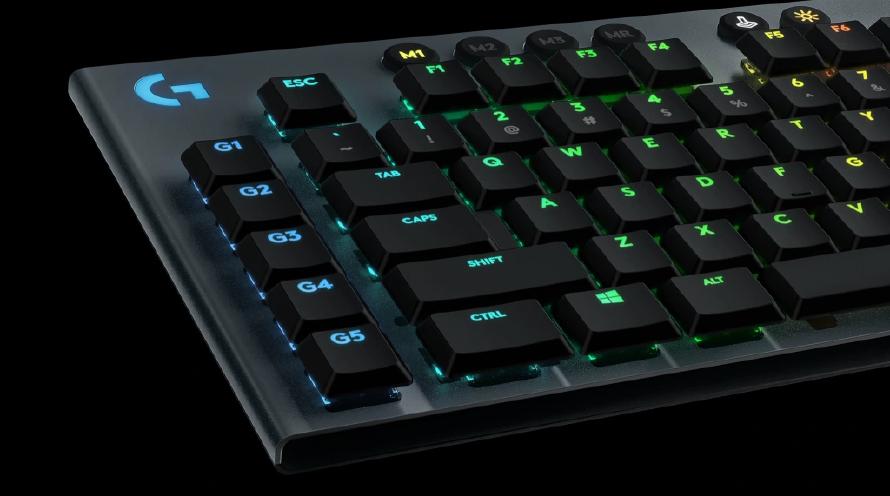The Ultimate Keyboard - Part I: Introduction
This post is part of a five part series, The Ultimate Keyboard.
I’m not much of an Apple fan, but for many years now I’ve used Apple A1243 keyboards both at home and at work. They are responsive, quiet, low profile, and simply great to type on, both when coding and writing. Recently, however, one of my A1243s suddenly had a malfunction where the keys 1 through 7 stopped working. My first thought was to have it fixed, but as it turns out, it’s pretty much impossible to fix anything made by Apple. Every part is glued or soldered together, and the only real option is to discard the broken keyboard and purchase a new one.
So now I’m looking for a new keyboard. I want something that’s like the A1243, but sustainable, which has turned out to be surprisingly hard to find.
One of the first things I discovered is that if you want a keyboard that can actually be repaired without replacing most of it, you’ll end up with a keyboard with mechanical switches. Mechanical switches are typically neither silent nor slim, which means that finding a quiet and low profile keyboard that can be repaired isn’t done in an evening. That I’d also like a keyboard with Norwegian keyboard layout1, doesn’t make it any easier.
When I set out to write this post, I hoped I would be able to summarize everything I’ve discovered while travelling down the rabbit hole that purchasing a keyboard turned out to be. But I’ve come to realize that if I was to do that, I’d have to create a post so long, it’d probably break the internet. Here are just a few of the topics I’ve looked into so far:
- Mechanical switches: Brands, actuation force, actuation point, noise level, travel distance, style (linear, clicky, tactile), form factor, and so on and so forth.
- Keyboard size: Full size, tenkeyless, compact, planck? Something else I haven’t even discovered yet?
- Standard form factor or ergonomic?
I really don’t want to blindly purchase a $200+ keyboard without doing some proper research. Ideally, I’d test every keyboard I consider buying for at least a week, but that’s not a realistic option, so what I want to do now is to write down all my research in a series of posts. Let’s call it “discovering while writing”.
We’ll see how it turns out. I can vaguely remember writing about publishing a series of posts about retro tech earlier this year, but have yet to see an actual post on the subject.
The Intermediate Choice
To replace the malfunctioning A1243 keyboard, I rather spontaneously bought a discounted Logitech G815 Lightsync RGB demo unit with linear Logitech switches. The keyboard is fairly slim, but still taller than the A1243. The linear switch is supposed to be the most silent Logitech switch, but I can clearly hear myself typing through the noise cancelling headphones. The G815 is not a bad keyboard, by all means, but I suspect it’ll just be a gateway drug for me into the world of mechanical keyboards.

I wrote this post on a borrowed Apple Magic Keyboard with numeric keypad. It’s a great keyboard to write on, even better than the A1243, but I find myself mistyping a lot more than usual. It might be that I’m getting used to the G815, which has a slightly different keyboard layout than the Apple keyboards. This has led me to believe that which keyboard I’m using doesn’t really matter that much. It’s just a matter of getting used to it.
Or perhaps not. The keyboard is the device I interact with the most during the day, both privately and at work. It’s perhaps the most important hardware tool in my developer tool kit, and it’s incredibly important that I don’t end up with tendinitis or other musculoskeletal problems because I use a crappy keyboard. That is why it’s critical to put some time into doing proper research instead of just blindly purchasing a keyboard.
Anyway. This is me rambling on a Saturday night. We’ll see how everything turns out.
There are three extra letters in the Norwegian alphabet, æ, ø, and å. Why? Probably to make it harder for us Norwegians to purchase keyboards. ↩︎
Feedback
This post has no feedback yet.
Do you have any thoughts you want to share? A question, maybe? Or is something in this post just plainly wrong? Then please send an e-mail to vegard at vegard dot net with your input. You can also use any of the other points of contact listed on the About page.